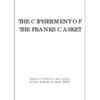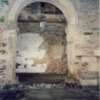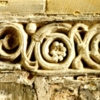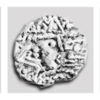Browse Items (91 total)
- Tags: Art history
Sort by:
The Cipherment of the Franks Casket
In 1857 the antiquarian and prodigious benefactor Sir Augustus Wollaston Franks lighted on a small, odd-looking whalebone box in an antique shop in Paris. He purchased it immediately, having recognized that the box was of Anglo-Saxon origin, and…
Stained Glass in Anglo-Saxon England
From Videmus, the online magazine for medieval stained glass (http://www.vidimus.org/index.html): This feature supports the launch of a major campaign by the Wearmouth – Jarrow Partnership to have the remains of two Anglo-Saxon monasteries at…
Items about Two Saxon buildings at Deerhurst
There are two buildings at Deerhurst in Gloucestershire which are or contain Saxon remains.
Odda's chapel is shown first, then two features
from the nearby Church which was originally Saxon
and much developed later but retaining notable
Saxon…
Odda's chapel is shown first, then two features
from the nearby Church which was originally Saxon
and much developed later but retaining notable
Saxon…
Tags: Archaeology, Architecture, Art history, Building, Church, Deerhurst, Religion, Stonework
St Gregory's Minster, Kirkdale
A PowerPoint presentation with recent (2006) photographs. St Gregory's Minster, in beautiful setting in Kirkdale, North Yorkshire, has a sundial that records its renovation -- just a few years before the Norman Conquest. The sundial also…
The Hackness Cross
PowerPoint presentation with recent (2006) photographs. St Peter's Church in Hackness, North Yorkshire, contains a remarkable Anglo-Saxon memorial cross (8th century), which commemorates 'Abbess Oedilburga' (possibly Ethelburga). Reflecting the…
Tags: Archaeology, Art history, Church, Cross, PowerPoint, Religion, Runes, Stonework
Anglo Saxon Architecture
Part of an evolving web site covering Anglo-Saxon church architecture from the end of the Roman period to the Conquest, this table is part of my web site and is based on information, extracted by me, contained in H.Taylor's three volumes,…
Tags: Archaeology, Architecture, Art history, Building, Church, Religion, Stonework
Anglo Saxon Coins and "Chinese Whispers"
It may be hard to believe, but the design of the central and right-hand coins is based on the Antoninianus (left). It seems that Anglo Saxon coiners had the difficult job of making copies of Roman coins with no access to the originals. They…
Tags: Art history, Coins, Numismatics, Runes
Alfred Jewel
The Alfred Jewel, possibly the handle of an aestel, is held in the Ashmolean Museum. Its motto reads (in modern English) "Alfred ordered me to be made". Discovered in the 17th century, it is believed to have been made in the 9th, probably in Wessex.
Tags: Alfred, Alfred Jewel, Archaeology, Art history, Ashmolean Museum
The Winchester Reliquary
These images explore one of Winchester City Museum's most enigmatic objects: a gilded burse reliquary, dating from the 9th or 10th centuries*. This is a bag-shaped container for relics, measuring approximately 18 cm tall by 16 cm wide. A poignant…






